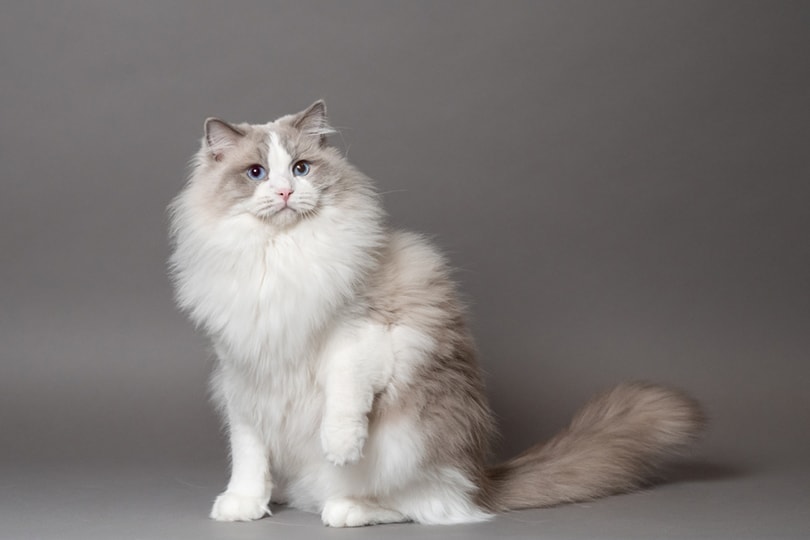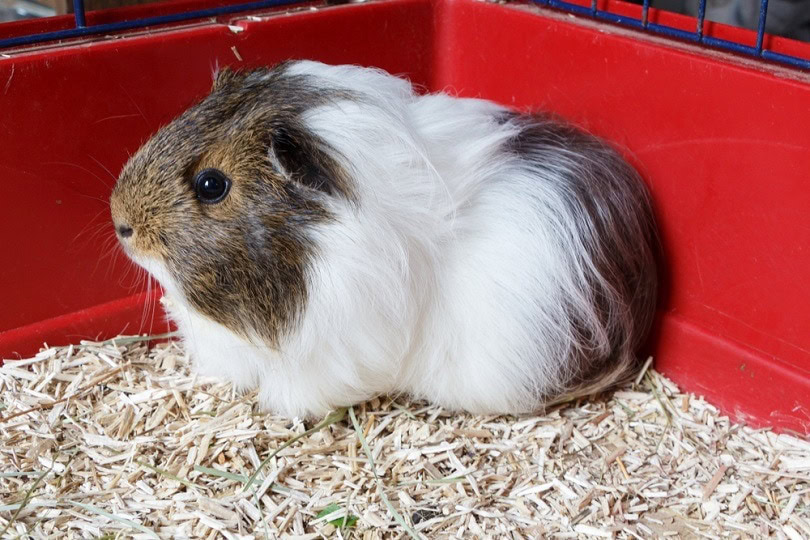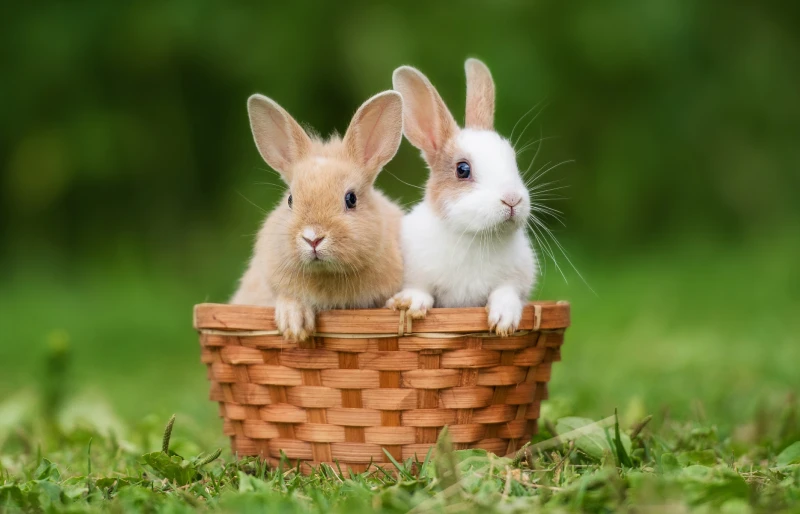VET APPROVED

The information is current and up-to-date in accordance with the latest veterinarian research.
Learn more »Ragdoll cats are one of the most popular cat breeds around, which isn’t surprising considering how beautiful and cuddly they are. These floppy kitties make fabulous pets for almost anyone with their sweet, friendly personalities. But what do you actually know about this cat breed?
There’s more to the Ragdoll than just sweetness and a penchant for snuggling! In fact, we’ve gathered 14 fascinating facts about this cat breed that you might not know. Keep reading to up your knowledge about the Ragdoll breed!
 The 14 Most Fascinating Ragdoll Cat Facts
The 14 Most Fascinating Ragdoll Cat Facts
1. Ragdolls are a newer breed with an interesting history.
In California in the 1960s is when the Ragdoll breed got its start. That’s when Ann Baker became fascinated with the offspring of her white domestic long-haired cat, Josephine. Baker found Josephine’s babies interesting because they were extremely calm and friendly. Josephine had been hit by a car not long before giving birth, and Baker theorized that the feline’s genes were somehow changed by the trauma of the car accident and then passed to the kittens. She also considered that a local university may have done secret experiments on Josephine to change her genes. However, these wouldn’t be the oddest things she ended up believing about Ragdolls.
Baker took and bred some of Josephine’s kittens, which eventually led to the look of the Ragdoll as we know it today. She then named the breed “Ragdoll” and trademarked it, so it was difficult to become a Ragdoll breeder without her being involved. However, Baker’s beliefs soon grew odder as she claimed Ragdolls didn’t feel pain and were a link between humans and aliens. It wasn’t long before Ragdoll fans and breeders found ways to get around her trademark, so they could distance themselves and breed the Ragdoll line without her.
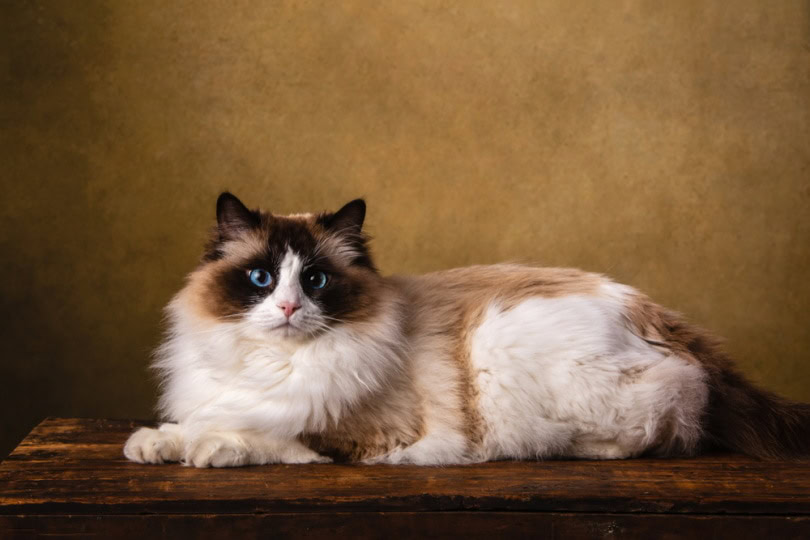
2. Ragdolls come in several colors and patterns.
If you’re interested in owning a Ragdoll, you’ll be pleased to know the breed comes in a wealth of colors and patterns. All Ragdolls must be pointed, meaning that the body is lighter than the points. The colors that are accepted by The International Cat Association (TICA) are red, cream, chocolate, lilac, blue, seal, cinnamon, and fawn. Patterns are classified into colorpoint, mitted, and bi-color. There are patterns other than these, including tortie and lynx, but they aren’t often recognized by associations (although some, such as the Ragdoll Fanciers Club International, do).
3. To fit the breed standard, Ragdolls must have blue eyes.
To be recognized as a purebred Ragdoll, the cat must have blue eyes. While some Ragdoll cats have eyes with other shades, such as green or golden, this results from being a mixed breed rather than a purebred one and thus is not recognized. In fact, both the Cat Fanciers Association (CFA) and International Cat Association (TICA) have rules in place to disqualify Ragdolls without blue eyes.
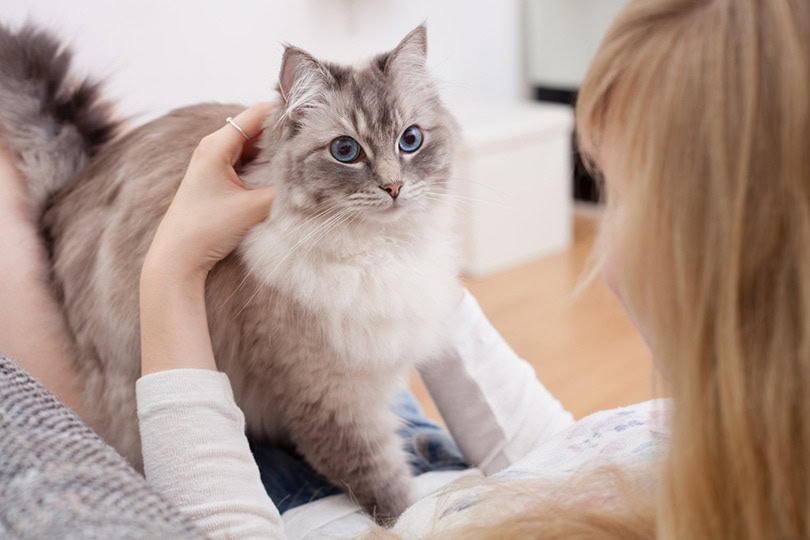
4. The Ragdoll breed is one of the largest.
Ragdolls are big kitties! This breed is up there in size with the Maine Coon, with females weighing between 10 and 15 pounds and males weighing between 15 and 20 pounds. Plus, this breed reaches an average height that’s anywhere between 9 and 11 inches. Considering most other breeds are only about nine inches in height and up to 11 pounds, it’s a big difference!
5. But they grow slowly.
One truly fascinating fact about the Ragdoll is the speed at which it grows. Most felines reach full maturity by one year, but Ragdolls don’t reach their full size until about the age of two. Instead, these felines grow in stops and starts. From birth to 12 weeks of age, they’ll grow at a normal rate. After that, growth tapers off and comes in spurts, so the Ragdoll doesn’t reach maturity until around their second birthday.
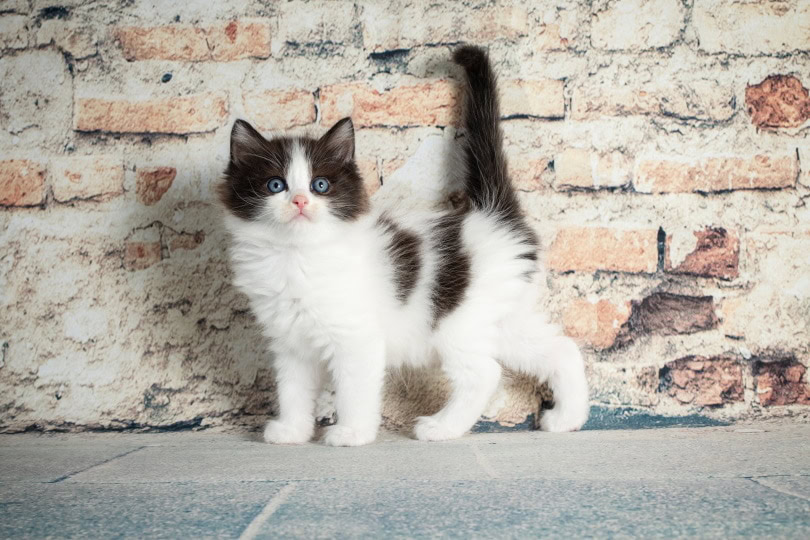
6. Ragdolls live for quite a long time.
The Ragdoll breed has a longer life expectancy than most cat breeds. While the average feline will live 10–15 years, Ragdolls can live 15–18+ years! Of course, this only applies to indoor kitties, as outdoor pets run into many more dangerous things, like cars, diseases, and toxins. But if you have a Ragdoll living indoors, you can enjoy a few extra years with your pet.
7. Ragdolls have color-changing coats.
Did you know that all Ragdolls are born with pure white fur? It’s true! However, as they get older, points on their coats begin to develop color and pattern. This is due to a genetic mutation that results in the final color of a cat being related to its body temperature. So, where body temperature is lower, such as the tips of the ears, fur will be darker. But in areas where body temperature is higher, such as the torso, fur will be lighter.
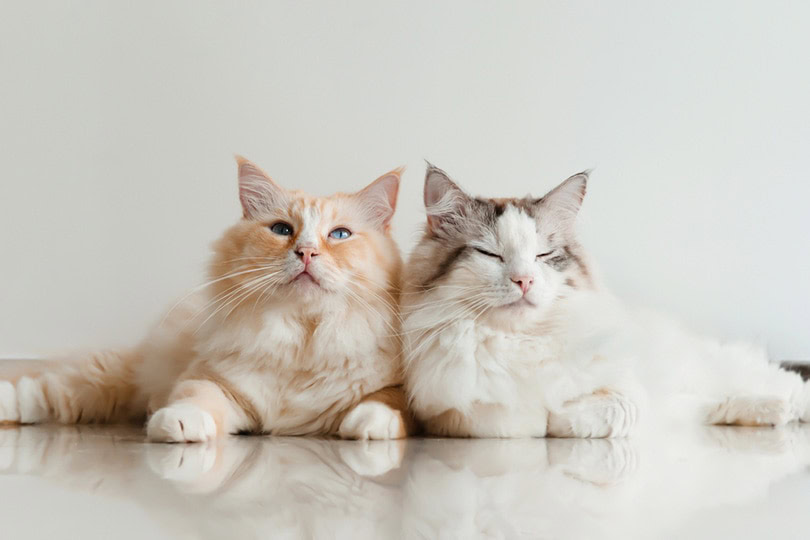
8. Ragdolls have minimal undercoat.
Many people believe the Ragdoll is a hypoallergenic breed because they have a minimal undercoat. And while a lack of an undercoat does mean there is less shedding from a Ragdoll (although not a complete absence of shedding!), the breed isn’t truly hypoallergenic. If you have allergies, you should speak to your doctor before considering living with a Ragdoll.
9. These floppy kitties are friendly and outgoing.
Ragdolls are an incredibly friendly breed with a sweet, trusting personality. So, a Ragdoll wouldn’t be opposed to meeting new people and making new friends. The downside to this friendly, outgoing nature is that you need to be careful if you let kitty venture outdoors, as they could wander off, meet a new best friend, and end up going with them. We recommend keeping your cat either on a leash or in a carrier of some kind while outside.
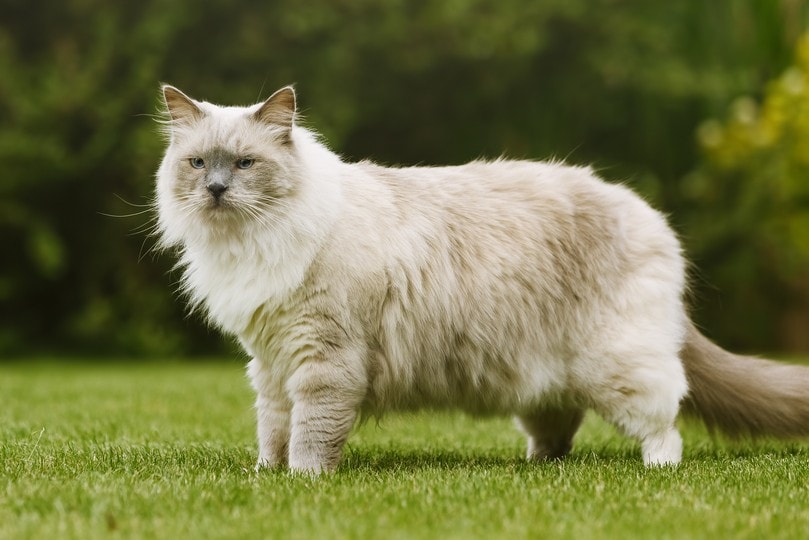
10. Yet, they are also very quiet.
Just because a feline has a personable nature and is willing to make friends with almost everyone doesn’t mean it needs to be vocal. And Ragdolls are very much not a vocal breed. You’ll find these felines rarely meow, making them perfect companions for those living close to others. However, this tendency to remain silent can also be a negative, as a Ragdoll might not make noise if it’s in pain.
11. Ragdolls have a puppy-like personality.
Ragdolls are known as “puppy-cats” because they have very dog-like natures! They love to be close to their people and will follow you around closely. The breed also enjoys games of fetch. So, if you’re a cat person that’s ever wondered what owning a dog might be like, a Ragdoll can answer the question for you!
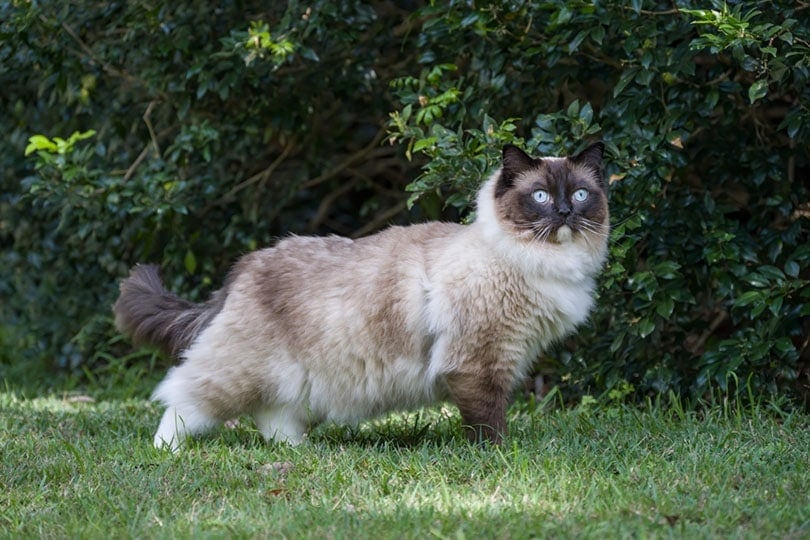
12. The breed loves water.
Felines are fairly well-known for their aversion to water, right? They hate getting any part of themselves wet, as it’s quite uncomfortable. Well, the Ragdoll is the exception! These silly kitties love playing in the sink and tub (in fact, you might find your cat joining you in the shower!), so expect them to come running when they hear the sound of water. Keep in mind, though, that every cat is an individual, so every Ragdoll might not enjoy water playtime. But in general, the breed has a love of it.
13. A Ragdoll was the longest-living Janus cat.
You might be wondering what exactly a Janus cat is. Janus was a Roman god of duality, beginnings, endings, and doorways, often depicted with two faces. A Janus cat is the same—a feline born with two faces (or craniofacial duplication). This disorder is extremely rare, and the cats born with it don’t often survive after birth.
But, in 1999, a Janus cat was born that defied the odds. This Ragdoll cat lived to be 15 years old!
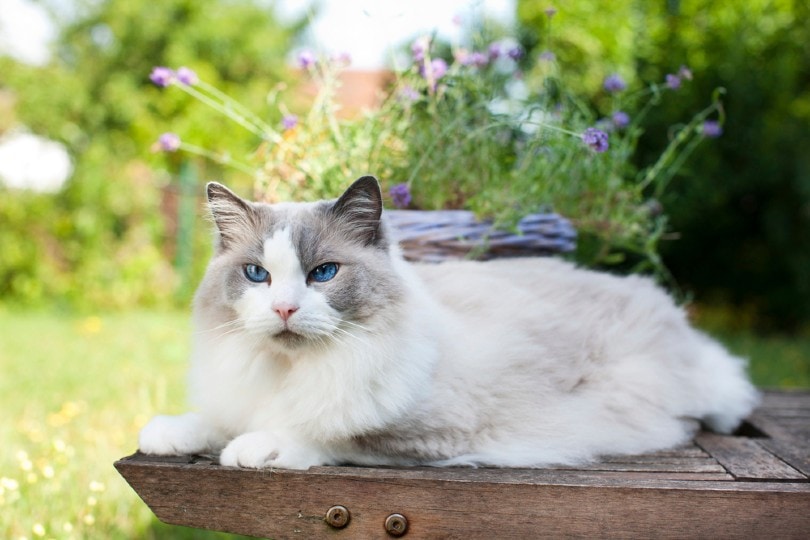
14. Taylor Swift owns a Ragdoll.
If you know anything about Taylor Swift (and chances are good, you know at least a thing or two), then you know that Taylor is a huge cat person. She’s mom to three cats in total—two Scottish Folds and one Ragdoll. The Ragdoll is named Benjamin Button and is a seal bi-color (and is absolutely as cute as a button!).

Conclusion
And there you have it—14 things you might not have known about Ragdoll cats. From the breed’s unique beginnings to their love of water, the Ragdoll is a fascinating breed. If you’re considering adopting one of these felines, you’re in for a very long time of fun and cuddles!
- Related Read: Ragdoll Cat Price: (Cost Breakdown)
Featured Image Credit: madeinitaly4k, Shutterstock
Contents
- The 14 Most Fascinating Ragdoll Cat Facts
- 1. Ragdolls are a newer breed with an interesting history.
- 2. Ragdolls come in several colors and patterns.
- 3. To fit the breed standard, Ragdolls must have blue eyes.
- 4. The Ragdoll breed is one of the largest.
- 5. But they grow slowly.
- 6. Ragdolls live for quite a long time.
- 7. Ragdolls have color-changing coats.
- 8. Ragdolls have minimal undercoat.
- 9. These floppy kitties are friendly and outgoing.
- 10. Yet, they are also very quiet.
- 11. Ragdolls have a puppy-like personality.
- 12. The breed loves water.
- 13. A Ragdoll was the longest-living Janus cat.
- 14. Taylor Swift owns a Ragdoll.
- Conclusion
